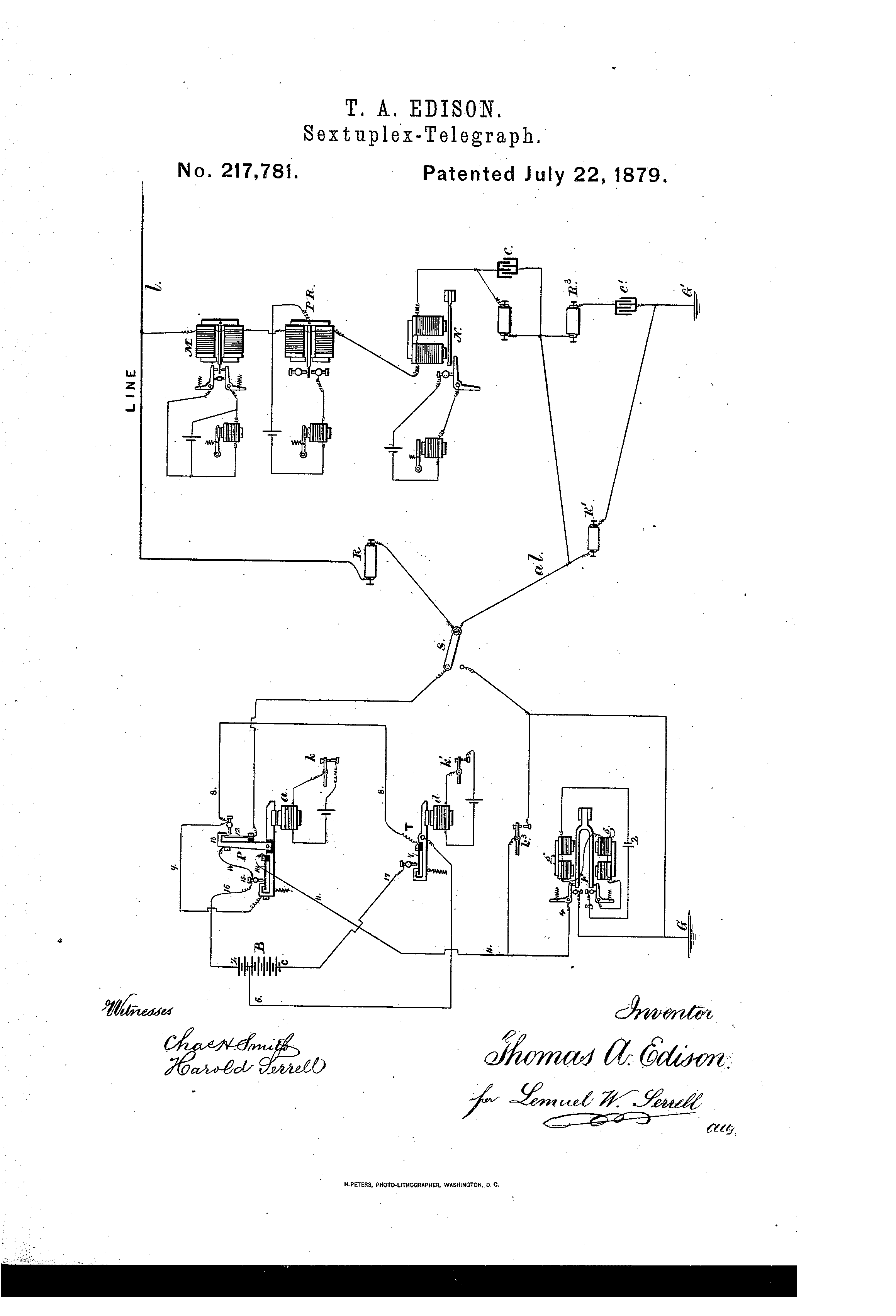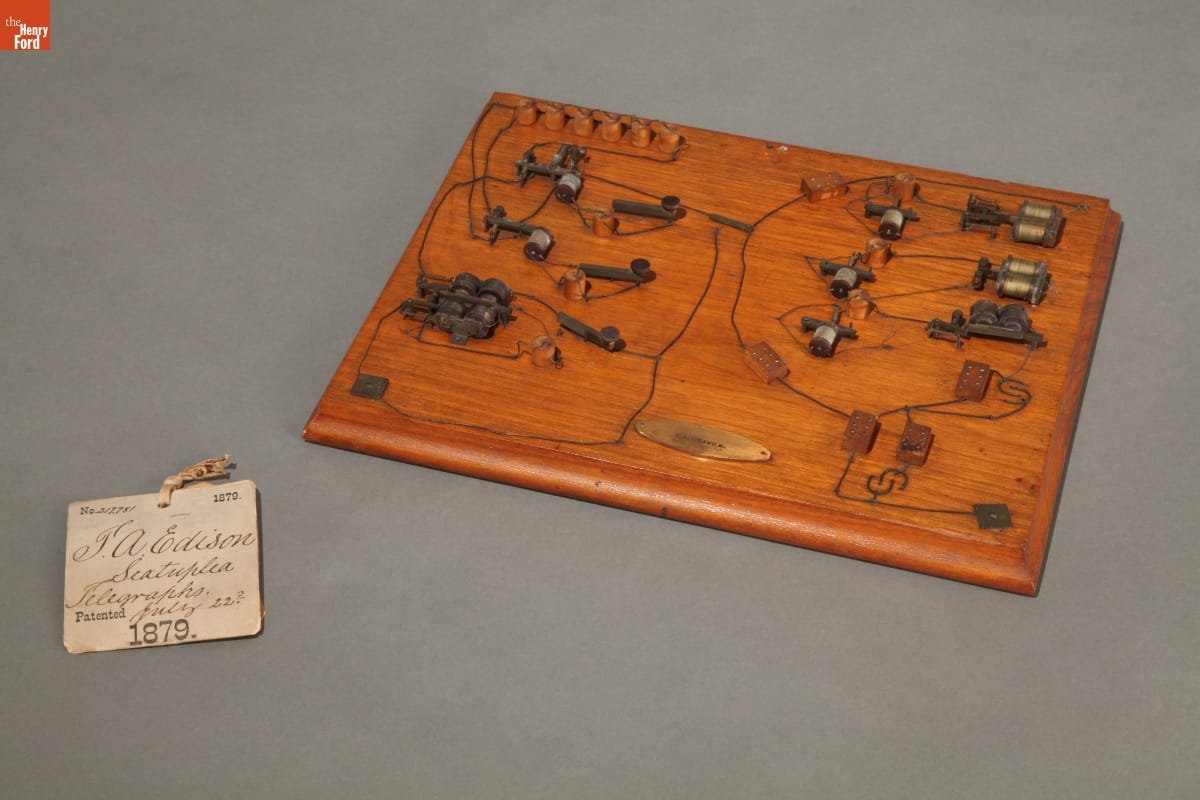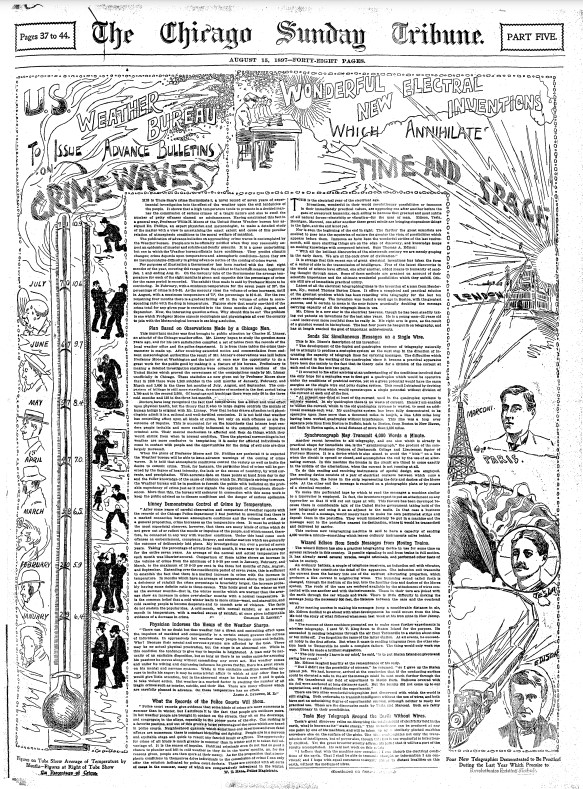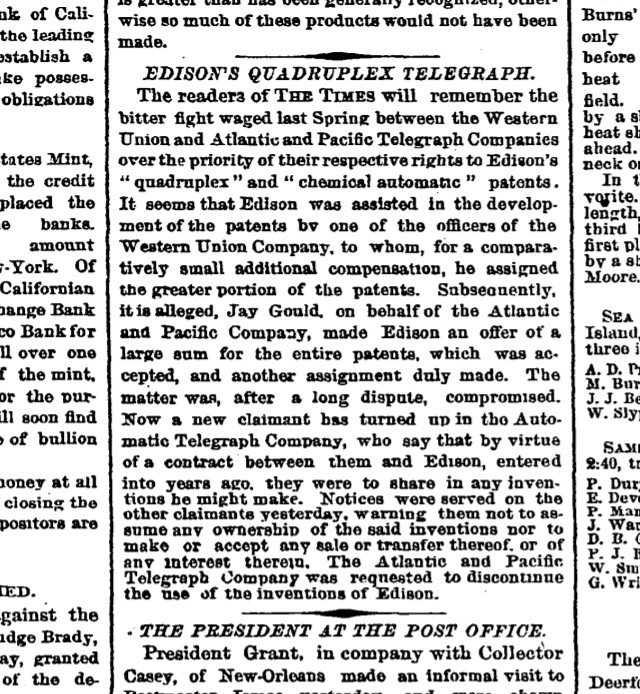Immediate Effects of the Quadruplex Telegraph
Telegraph companies realized the value of this new invention almost immediately. Western Union bought the rights to the patent and adapted 13,000 miles of telegraph wire to the new system. By just changing the transmitters on either end, they could quadruple the effectiveness of their system. This further increased their dominance in the industry. The cost savings from the quadruplex telegraph did not only benefit consumers, it also allowed Western Union to increase their profit per message.
“This invention is an improvement upon the telegraph known as the ‘quadruplex,’ and I designate this invention the ‘sextuplex telegraph’”
- Thomas Edison
Edison continued to work on improving his invention, and eventually he was able to send 8 simultaneous messages. This was achieved by combining his acoustic telegraph with the existing quadruplex design. Edison’s innovations continued to improve the industry.
Unfortunately, the rights to the quadruplex telegraph patent were surrounded by controversy. Edison had developed the technology and sold the rights to Western Union for $10,000. Later, business man Jay Gould offered him over $100,000 for the invention, which Edison agreed to. The courts eventually ruled that Western Union was the true owner of the patent rights.
“Subsequently, it is alleged, Jay Gould, on behalf of the Atlantic and Pacific Company, made Edison an offer of a large sum for the entire patents..."
- New York Times



